is it possible to calculate the distance between points which i created with cv2.projectPoints?
I have two aruco markers and from both markers i have created (with cv2.projectPoints) points which are in a specific distance to the marker. Now i want to know how far these points are away from each other?
I know you cant give a specific code without an MVP and it is not necessary i only need an idea how this is possible to calculate. I would be awesome if someone knows maybe a cv2 function or a way to calculate these?
Thank you very much <3
Edit:
I generated the four identity matrixes and inversed all of them. Code and result ist below.
#T_point1_marker1 = np.linalg.inv(T_marker1_point1)
#T_marker1_cam = np.linalg.inv(T_cam_marker1)
T_point1_marker1 = np.array([
[ 1., 0., 0., -0.1 ],
[ 0., 1., 0., -0.05],
[ 0., 0., 1., 0. ],
[ 0., 0., 0., 1. ],
])
T_marker1_cam = np.array([
[ 1., 0., 0., 0.10809129],
[ 0., 1., 0., 0.03833054],
[ 0., 0., 1., -0.35931477],
[ 0., 0., 0., 1. ],
])
T_cam_marker2 = np.array([
[ 1., 0., 0., 0.09360527],
[ 0., 1., 0., -0.01229168],
[ 0., 0., 1., 0.36470099],
[ 0., 0., 0., 1. ],
])
T_marker2_point2 = np.array([
[ 1., 0., 0., 0.005],
[ 0., 1., 0., 0.1 ],
[ 0., 0., 1., 0. ],
[ 0., 0., 0., 1. ],
])
#Process finished with exit code 1
The think i don't understand is this part:
T_point1_point2 = T_point1_marker1 @ T_marker1_cam @ T_cam_marker2 @ T_marker2_point2
How do i bring these four matrixes together so i get T_point1_point2?
Thanks again :)
